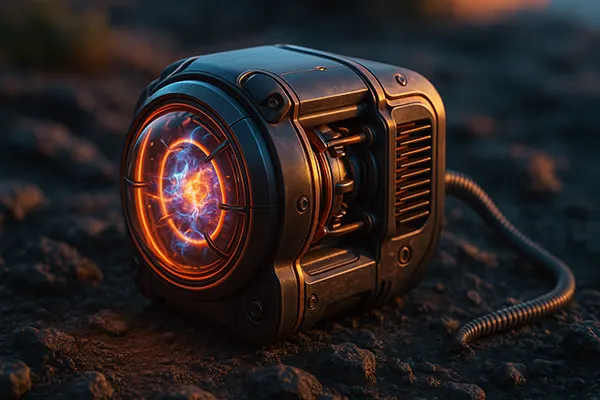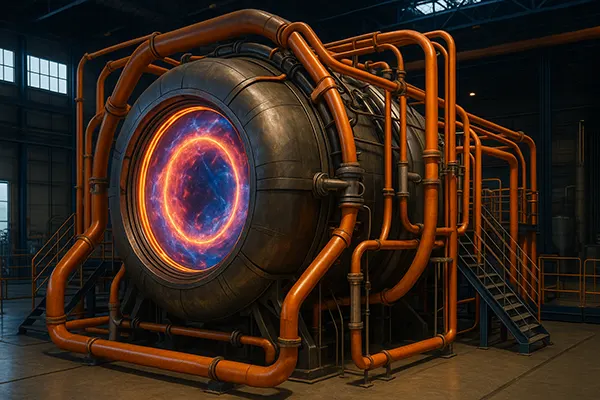
Renewable Energy for the Individual: Pocket Fusion Reactors as a Concept
As energy demands grow and decentralisation becomes a key trend, scientists and engineers are exploring highly compact, efficient, and clean energy sources that could be used by individuals or small communities. One of the most provocative concepts in this realm is the pocket-sized nuclear fusion reactor – a futuristic idea that combines the potential of fusion energy with the mobility and accessibility of personal devices.
The Vision of Personal Fusion Energy
The idea behind pocket fusion reactors is rooted in the pursuit of clean, sustainable, and highly portable energy. Unlike traditional nuclear power, which relies on fission and generates long-lived radioactive waste, fusion replicates the sun’s core process: merging light atoms to release enormous energy with minimal residue. The theoretical potential of such devices is vast – enough to power a household, a vehicle, or even remote installations with virtually no emissions.
Despite sounding like science fiction, research into micro-fusion devices has accelerated. The development of high-temperature superconductors, powerful magnetic confinement systems, and breakthroughs in inertial fusion have all contributed to this vision. Companies like Helion and TAE Technologies have already demonstrated compact fusion prototypes, although they are not yet pocket-sized.
The ultimate goal is to shrink these technologies into containers smaller than a suitcase, with a reaction chamber, fuel input (typically deuterium and tritium), magnetic control systems, and a heat-to-electricity conversion module. This could revolutionise energy independence and decentralised infrastructure worldwide.
Current Scientific Barriers to Pocket Fusion
Miniaturising nuclear fusion into a handheld device remains a monumental challenge. The primary barrier is achieving and maintaining the extreme temperatures – over 100 million °C – required for fusion reactions. Magnetic confinement (as in tokamaks) and inertial confinement (as in laser fusion) both demand sophisticated, bulky infrastructure currently unsuitable for miniaturisation.
Moreover, the power-to-weight ratio of supporting systems (cooling, containment, shielding) presents substantial engineering hurdles. Compact systems still generate bursts of neutron radiation, which require effective shielding that adds mass and volume. No known material can yet contain such conditions efficiently at a personal scale.
There’s also the problem of sustained reaction. Current designs can only maintain fusion conditions for milliseconds. Extending this to minutes or hours, necessary for practical energy production, remains unsolved. These obstacles require a mix of materials science, plasma physics, and nanotechnology to overcome.
Use Cases and Ethical Implications
Should such a technology become viable, its applications would be transformative. Personal energy generators could offer remote villages or disaster zones independent electricity for years with minimal maintenance. Vehicles could run without fuel, homes could become entirely off-grid, and even space missions could rely on such reactors for sustainable energy far from Earth.
Military interest is another possibility, raising concerns over dual-use risks. A small fusion reactor, while not suitable for weaponisation in the traditional sense, could provide energy for directed energy weapons or autonomous systems. The availability of high-density power sources introduces new ethical dimensions to defence technology and regulation.
Moreover, if commercialised without stringent controls, disparities in access could widen. Only wealthier nations or individuals may initially afford the technology, potentially exacerbating global inequality. Regulations and international collaboration would be crucial to ensuring equitable and peaceful development.
Environmental Impact and Safety Considerations
Fusion power is celebrated for its cleanliness – it emits no greenhouse gases and poses no meltdown risk. However, even compact fusion devices will generate neutron radiation, which activates nearby materials and requires robust shielding and responsible end-of-life handling. Long-term operation may still lead to low-level radioactive waste, although significantly less than fission reactors.
In terms of safety, pocket reactors would need automated shutdown systems, thermal regulation, and tamper-proof designs to prevent misuse or malfunction. While fusion reactions cannot self-sustain without continuous external energy input (making them inherently safe), unintended consequences from improper shielding or control system failure must be considered.
Environmental monitoring and strict compliance with international safety standards would be essential. As with all nuclear technologies, transparency and public trust will determine societal acceptance and widespread deployment.

The Road Ahead: Timeline and Expectations
As of mid-2025, no functioning pocket-sized nuclear fusion reactor exists, nor is one expected to enter the consumer market within the next decade. The physics and engineering challenges remain too formidable for near-term breakthroughs at such scales. Most existing compact fusion projects are still in the experimental phase and focus on lab-scale or vehicle-mounted systems.
Nevertheless, significant public and private investment continues. Government-backed projects in the United States, European Union, and China, alongside startups like First Light Fusion and Commonwealth Fusion Systems, aim to achieve net-positive fusion by 2030 in larger systems. Their findings will influence the feasibility of smaller, individual-use devices in the future.
In summary, while the concept of personal fusion reactors is rooted in real scientific ambition and progress, it currently remains a long-term vision rather than an imminent reality. Continued research, ethical frameworks, and societal dialogue will shape whether such technology becomes a transformative tool or a speculative fantasy.
Public Perception and Scientific Communication
Communicating the realities of fusion science is vital. Misconceptions around its safety, timeline, and viability can lead to misplaced expectations or fear. Scientists and media must work together to explain that fusion is not yet a magic bullet, but a long-term, high-potential field of energy research.
Educational programmes and public outreach will be essential in building informed understanding and support. Highlighting progress without hype – such as the achievement of Q=1 (energy break-even) – helps align public hopes with scientific timelines. Realism must temper optimism to sustain trust and funding.
Ultimately, the story of pocket fusion is one of aspiration and challenge. While the physics supports its possibility, the technology to make it a reality will require decades of disciplined innovation and collective effort.
